How To Get A Car Unstuck
7 Things To Do When Your Car is Stuck in Snow
A blizzard is on the way. You've stocked up on candles, hot cocoa and batteries. But what if you have to leave the house? Do you know how to get your car out of the snow if you get stuck?
From driving techniques to using props, here are seven ways to get your car moving again, plus some advice about how to prepare for a snowstorm.
Before It Snows
There are two key things to do BEFORE the storm arrives to be sure you can get your vehicle back on the road after a big snow. They can make the difference between looking like a genius and having huge hassles.
Have the right tires in the right condition.
If you live somewhere where storms can bring a foot or two of snow at once, you should definitely be running snow tires, not all-season tires. (Find out how to choose snow tires.) Before the snow starts falling, get your air pressure checked and make sure your tire tread's in the proper condition.
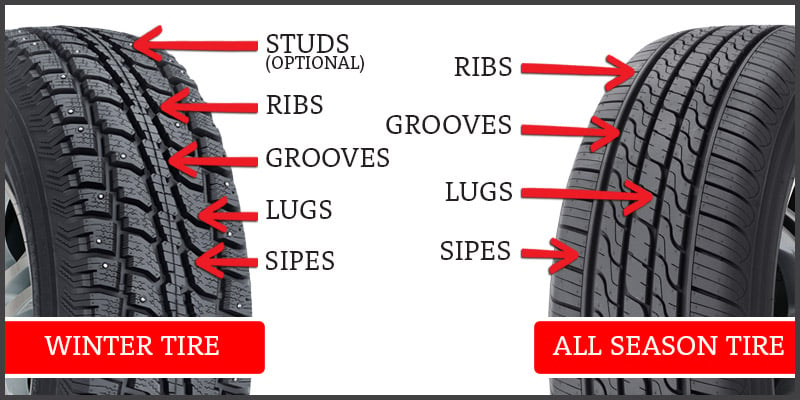
Keep a snow shovel in your vehicle.
Not only will this come in handy for you, but you may also be a hero to those who are caught unprepared. (Speaking of preparedness, here's a winter safety kit checklist of other items to keep in your car so you're ready for pretty much any winter road condition.)
Before You Turn Your Vehicle On
Turn off traction control.
Both drive wheels will need to have traction for you to get unstuck. These are the front tires on a front-wheel-drive and the rear tires on rear-wheel drive, AWD and 4WD vehicles. Turn off the car's traction control system (usually with a button somewhere on the dashboard or console).
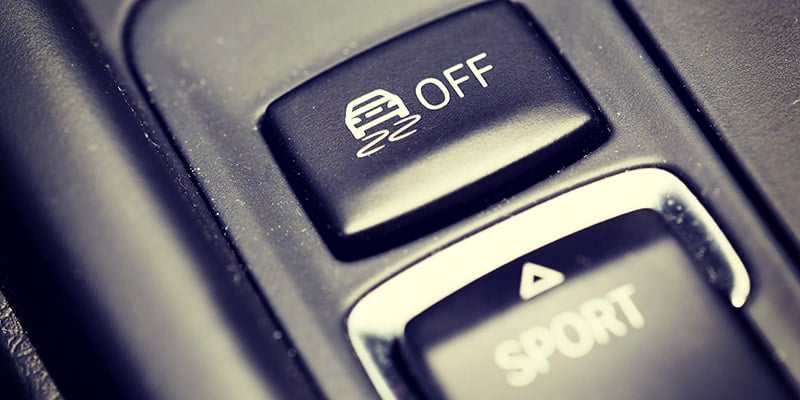
Clear a path around the tires.
- Starting with the drive tires, dig the snow out from in front, underneath and in back. Clear a path long enough for wheels to move forward and back a few feet, assuming you have that much space on either end of the car. Remove any snow around the tires that's higher than the ground clearance of the car. Dig out snow from under the front of your car. If you're high-centered, with snow or ice under the vehicle blocking your exit, you won't be going anywhere.
If you don't have a shovel handy, try using a screwdriver, ice scraper or another tool to at least break up any ice that's formed below the tires. A rougher surface area provides more traction.
- Also dig out the tailpipe before you start the engine. People have lost their lives from carbon monoxide building up inside a vehicle when they didn't know the exhaust pipe was blocked.
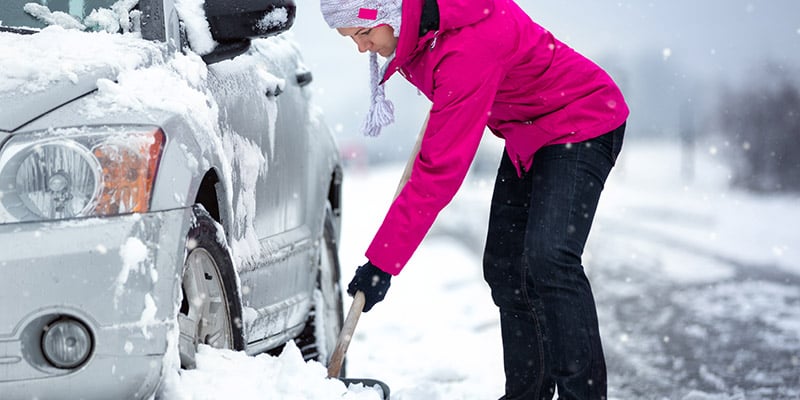
1. The Forward-and-Back Technique
Start your vehicle, roll down your window and take off your hat or earmuffs so you can hear clearly. Even better, stick your head out the window to watch your front tire. You'll get the best traction by straightening the wheel, so do this as much as your parking situation allows.
Put your vehicle in the lowest gear. If you've got a four-wheel drive SUV or pickup, engage the low-range gearing. Move forward just a bit.
Now slowly back up. Don't rev the engine. Stop, then put it in forward and apply a little gas. This can tamp down loose snow and maybe give you enough traction to get out.
Listen carefully. If you hear any tire spinning, take your foot off the gas immediately.
2. The Braking Technique
If your vehicle didn't move at all or a tire is spinning, try braking while at the same time that you're giving a little gas. This should decrease the spinning and transfer some power to that wheel.
If you have a front-wheel-drive and there aren't curbs or other cars blocking your way, try turning the wheels slightly the other way and see if that gives you more traction.
Don't try this braking method for more than a few seconds. It can overheat your brakes which can compromise braking until they've cooled down.
3. Find Some Muscle
Sometimes a push from a few Good Samaritans will do the trick. Be 100 percent sure you use only the gear that keeps pushers out of harm's way (Forward gear only if they're pushing your vehicle from behind.). Ask your helpers to push on the count of three as you gently apply the gas.
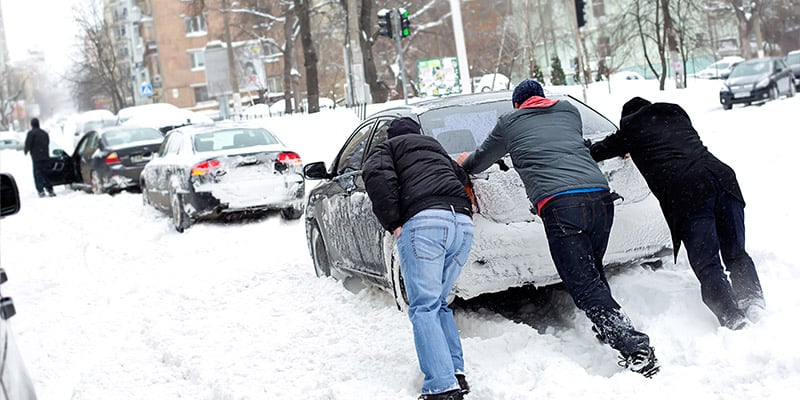
4. Use Snow Chains
If you're still stuck and you have snow chains, it's time to chain up. That almost always does the trick.
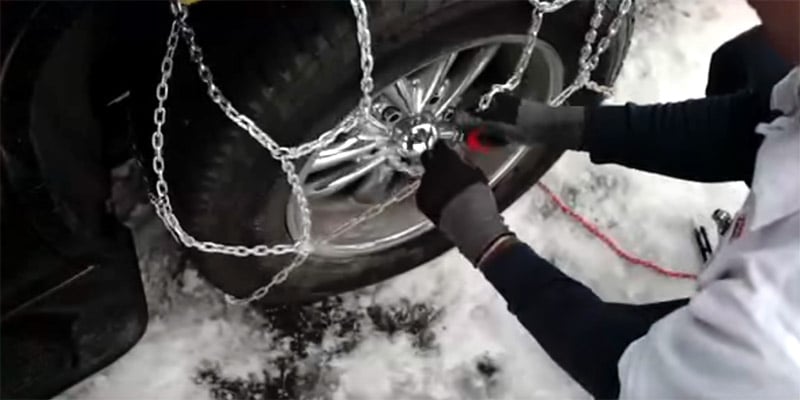
5. The Rocking Technique
If you don't have chains, and your vehicle is moving forward some but then stopping, try "rocking" back and forth between forward and reverse gears. Give it a little gas just as the vehicle starts to swing forward out of reverse. This may give you enough momentum to drive out. But be aware that this kind of rapid shifting can overload your transmission. Only try it a few times or you could end up with expensive damage. It will be much cheaper to just call a tow truck.
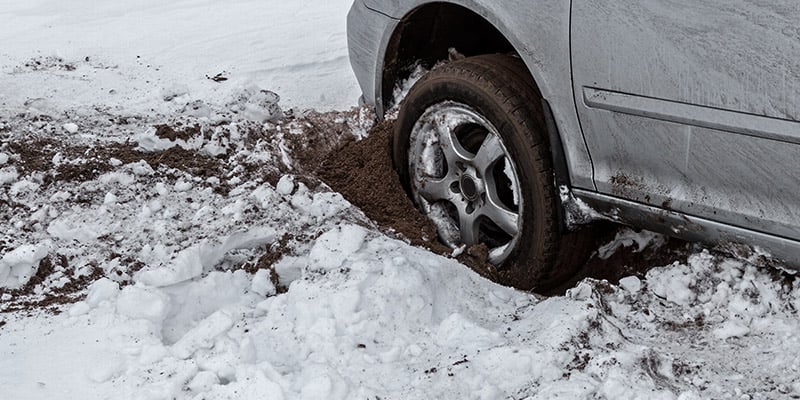
6. Add Traction with Sand, Kitty Litter or Cardboard
If you're still spinning, you can put something on the ground to add traction that won't damage your tires. Try sprinkling sand or kitty litter in front of the drive tires (and behind them if you're planning on backing out).
DON'T EVER USE ANTIFREEZE TO TRY TO MELT SNOW AND ICE. Antifreeze is toxic to children, pets, and wild animals, and it can find its way through storm drains to waterways where it can poison marine animals. Plus, in some states, it's illegal to pour antifreeze on the ground. Using salt as a deicer is also a bad idea for the environment — and your vehicle. It's corrosive to metal (like the undercarriage of your car) and becomes less effective below 25 degrees Fahrenheit anyway.
Another way to get traction is to lay cardboard, plywood, two-by-fours or even your vehicle's floor mats down in front of the drive tires (or behind them if you're starting in reverse). If you're in the middle of nowhere, you can use weeds or branches from the side of the road. But caution: Clear the area and go very easy when accelerating. Sometimes the wheels can make whatever you put down for traction shoot out. And be aware your mats could get ruined. Again, it's probably less out of your pocketbook to get a tow truck.
7. Let a Bit of Air Out of Your Tires
The last resort is to let a little air out of your tires, just enough so they look visibly lower. Only do this if you have a way to get them quickly refilled someplace close by. Driving on underinflated tires puts more rubber in contact with the ground and will give you better traction for a short distance. But driving this way isn't safe and it could damage your tires if it's a long way to the filling station.
![Letting air out of a tire]](https://www.lesschwab.com/on/demandware.static/-/Library-Sites-LesSchwabLibrary/default/dw9d975f34/images/learningCenter/article/content/les-schwab-deflate-tire.jpg )
Be Prepared When Your Car Does Break Free
If you're in forward gear, don't stop right away but drive somewhere you can see there's less snow and you can safely stop. If you're in reverse, keep backing up for a few yards, then take your foot off the gas. The snow will stop you. Next, put it in low gear and gently accelerate forward in the tracks you've made, just fast enough to break through where you were stuck.
Once You're Unstuck from the Snow
Re-engage your traction control system, if you turned it off. If you engaged your low-range 4WD, disengage. Make sure your radiator has air flow. Snow packed into the front of the grille can cause engine overheating.
Go immediately to the closest service station and refill your tires if you let any air out.
If you notice a vibration in your steering wheel, check for snow packed into your wheels. Pull over someplace safe and knock the snow or ice out with an ice scraper or shovel.
Want a complete list of resources for winter driving safety? Here's our guide for safe driving in winter, from prepping your vehicle to driving in bad conditions.
Important Notice: The information provided above is from a variety of resources deemed reasonably reliable. The operation of your vehicle, or the repair or replacement of your vehicle's equipment, may be different than for a typical vehicle. Please consult your owner's manual for specific warnings, notices, and other advice relative to the above.
Get More Driving Tips
How To Get A Car Unstuck
Source: https://www.lesschwab.com/article/what-to-do-when-your-car-is-stuck-in-snow.html
Posted by: eaglewelinigh.blogspot.com

0 Response to "How To Get A Car Unstuck"
Post a Comment